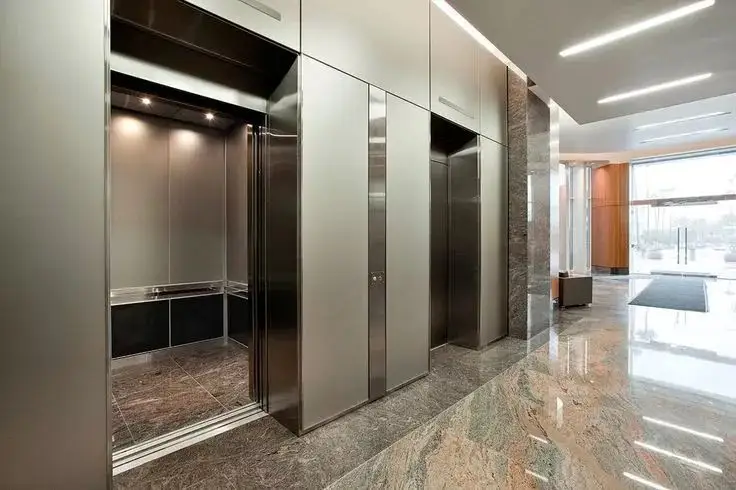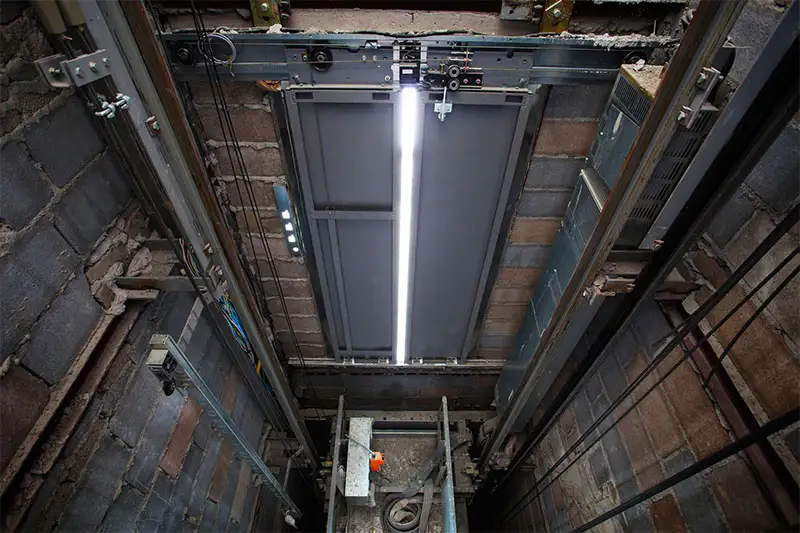What is an Elevator?
An elevator is a device that allows you to travel from one floor of a building to another, regardless of the number of floors, within a few minutes. With elevators, buildings (skyscrapers) with multiple floors are no longer excellent yet impractical innovations. Also commonly called a lift, elevators have become crucial structures in residential and commercial buildings. One of the significance of elevators is that they are time saving and energy conserving especially in high-rise buildings where walking or carrying items via the stairs would be illogical.
When designing your building especially if it has multiple floors, you need to ensure it meets the standards of disability access laws. In addition, elevators are an essential feature that provides easy access during emergencies like a fire outbreak.
Residents of multistoried buildings can comfortably and conveniently access their apartments within seconds instead of spending unnecessary time and effort using the stairs. In addition, having an elevator can significantly reduce the cost associated with running a business.

What Makes Up An Elevator: Basic Components
Several components work together to take you up or down when you enter an elevator. They play crucial roles in ensuring your trip is smooth and safe regardless of the number of floors you are traveling. Here are some basic components that contribute to the optimal performance of an elevator:
1. Elevator Car/Cabin
The elevator car/cabin is an enclosed space where people stand or goods are kept to be transported to another floor. Often described as the main part of the elevator, it is often spacious enough to contain a specific amount of people. Therefore, the elevator cabin must be carefully designed for safe, complete, and convenient travel. For example, a passenger elevator designed to hold and transport people often includes crucial details like handrails, emergency buttons, and sensors for safer travel.
2. Motor
The motor is responsible for making the elevator move upward or downward. It usually receives signals from the control system that determine the direction of movement of the elevator.
3. The Pulley System
This consists of a sheave (a wheel with a groove) and cables. Often made of steel, the cables are connected to the lift at one end and the counterweight at the other end. These cables play a significant role in moving the elevator up and down. In addition, they support, carry, and pull the elevator car. On the other hand, the sheave sits at the top and is connected to the engine via a shaft.
4. Counterweight
The counterweight is a crucial component of any elevator system. Elevators go up and down by balancing on a specific weight. The counterweight moves in reverse and this weight is carefully calculated to ensure a balance between the elevator car and the passengers’ weight. This balance is achieved when about 50% of the total weight that the elevator can carry is loaded. Subsequently, this weight moves down as the elevator car goes up and vice versa. In addition, the counterweight reduces the tension on the ropes for optimized safety and performance.
5. Safety Brakes
The Safety brake is designed to clamp down on rails within the shaft so that the elevator does not fall suddenly. This is necessary to ensure the safety of the passengers. In addition, the brakes control the speed of the elevator to prevent excessive acceleration. For example, if the downward or upward speed becomes excessive, the safety brakes are activated to prevent an accident.
6. Cabin Buffer
The cabin buffers are located at the bottom of the elevator. Like the name suggests, it works as a buffer to prevent injuries and protect people inside the cabin. This component is activated when the cabin is falling rapidly and it stores or distributes the kinetic energy to reduce the impact on passengers.
7. Safety Systems
An elevator is typically safe for humans thanks to the extensive safety systems. The primary purpose of the safety system is to manage situations that would have otherwise resulted in a major accident accompanied by injuries and even death in extreme cases. For example, if the amount of passengers in the cabin exceeds the expected weight, the safety systems are activated and the elevator stops working. In addition, elevators are designed with an emergency communication system that allows passengers to reach an expert in cases where the elevator is malfunctioning or suddenly stops moving.

Types of Elevators and How They Work
Elevators can be broadly categorized into two main classes- traction-roped elevators and hydraulic elevators.
How Traction Elevators Work
Traction elevators are a popular elevator design where the car is elevated and lowered by traction steel ropes. These ropes are connected to the elevator car and looped around a sheave (a pulley with grooves). Subsequently, the sheaves grip the hoist ropes, which causes the ropes to move when they are rotated.
The sheave is connected to the electric motor via a gearbox. The direction of the motor causes the sheave to raise or lower the elevator. For example, when the motor turns in a direction, the sheave causes the elevator to go up and causes it to go down when the motor turns in the other direction. Traction-roped elevators often house the motor, sheave, and control system above the shaft.
In addition, the ropes that elevate the car are connected to a counterweight to create a balance, which plays a crucial role in energy conservation. The counterweight is designed to be about the same weight as the car 40% filled. Therefore, when the car is at 40% capacity, it perfectly balances the counterweight. This balance is crucial for the optimal performance of the elevator. As a result, the motor does very little work to take the car up or down as the counterweight exerts its effect.
In other words, the balance between ensures the elevator system is in a state of near potential energy. Therefore depleting the potential energy in the cabin (when it moves downward) causes an accumulation of potential energy as the weight moves up towards the shaft and vice-versa.
How Hydraulic Elevators Work
This type of elevator relies on a hydraulic piston located inside the cylinder to lift or lower the car. In addition, it runs on pressurized oil supplied via a pump and valve system.
The three core components of a hydraulic elevator are:
- The tank acts as a fluid reservoir.
- A pump powered by an electric motor.
- A valve is located between the cylinder and the reservoir.
The pump pushes the fluid from the tank into a pipe that connects to the cylinder. Once the valve opens, the pressurized fluid goes back to the reservoir. However, once closed, the fluid goes back into the cylinder, which pushes the piston up and lifts the elevator car. Once the fluid has accumulated in the cylinder, the force pushes the piston up and elevates the cabin.
When the car reaches the requested floor, the control system sends a signal to the motor to close the pump. Once this happens, the flow of fluid into the cylinder is restricted. Since the fluid in the cylinder is trapped, the piston rests on the fluid and the car stops. For the descent, the hydraulic elevator relies hugely on gravitational force as the weight of the car and cargo push down on the piston. Once the valve opens, the accumulated fluid in the cylinder flows into the reservoir. Subsequently, the weight of the passengers and cabin pushes down on the piston, which causes fluid to return to the reservoir. As a result, the car begins to move downwards and the control system is once again engaged to bring the elevator to a halt.
Other Type Elevators
How Pneumatic Elevators Work
Pneumatic elevators are like tubes powered by air. No cables. No pulleys. Just air doing all the heavy lifting. The elevator car sits in a sealed, vertical tube. At the top of this tube, there’s a turbine (think of it like a giant fan).
When you want to go up, this turbine pulls air out of the space above the car. And what does that do? It creates a vacuum. With air pressure lower above the car, the air below pushes the elevator up. It’s like blowing up a balloon in reverse.
When it’s time to go down, the system slowly lets air back into the top of the tube. That added pressure pushes the car down, but in a controlled, smooth way. Think of it as gently letting the air out of a balloon so it drifts down instead of dropping.
How Climbing Elevators Work
Climbing elevators are a different breed. Unlike regular elevators, they don’t need cables, pulleys, or machine rooms. Why? Because they carry their own motor and gears. They’re self-sufficient.
Each elevator car has a motor and a set of gears that grip a rail built into the shaft. When you want to go up, the motor powers the gears to “climb” the rail. Want to go down? The motor reverses, and down you go. Simple, right?
This design is perfect for places where regular elevators won’t fit—like wind turbines, radio towers, or industrial sites. Need to inspect a tall structure? A climbing elevator can take you up without needing a big elevator system.
They’re compact and efficient, ideal for tight spaces or single-rider trips. And they’re built to be reliable, especially in challenging environments where a traditional elevator would be too complicated.
FAQs
1. How Do Elevators Keep Running for Years?
Elevators keep going strong for years, thanks to tough materials and smart upkeep. The key is regular maintenance—technicians check everything, from cables to brakes, catching issues early so things stay smooth. Plus, advanced monitoring systems track performance around the clock.
They alert techs to small hiccups, keeping downtime low. Over time, elevators also get upgrades to meet new safety standards and improve efficiency.
2. How Do Elevators Know What Floor to Stop On?
Elevators use a smart system to know exactly where to stop. Sensors track the elevator’s position in the shaft, pinpointing the exact floor level. When you press a button, the elevator’s control system processes the request, finding the quickest, most efficient route to your chosen floor.
Call buttons and destination controls guide the system, managing multiple requests to ensure everyone gets to their floor as smoothly as possible. The elevator stops precisely at each floor because the sensors and motors work together, slowing down and aligning perfectly before the doors open.
3. What Stops Elevators from Falling?
Elevators are packed with features that keep them from falling. The main hero? Steel cables—there are several of them, each strong enough to hold the elevator on its own. If one ever snaps, more are ready to pick up the slack.
Emergency brakes are another big safeguard. If the elevator starts moving too fast, these brakes kick in automatically, gripping the rails and stopping it in its tracks.
Then there’s the governor—a device that keeps tabs on speed. If things get too quick, the governor triggers those emergency brakes.
Conclusion: Choosing The Best Elevator Provider
Elevators are often classified based on the function of the building- residential, commercial, industrial, hospital elevators and more. Choosing the best type of elevator for your building may be challenging. With over 10 years of experience, our team of highly skilled professionals are always available to provide assistance.
At Dazen Elevators, we have what it takes to equip your building with the right elevator that complies with safety standards. In addition, we have various elevator designs that will complement the aesthetics of your buildings.
Finally, either your building is for residential or a business purpose, installing an elevator is a good long-term investment. Contact us to enjoy highest quality elevators and escalators that are long lasting!
